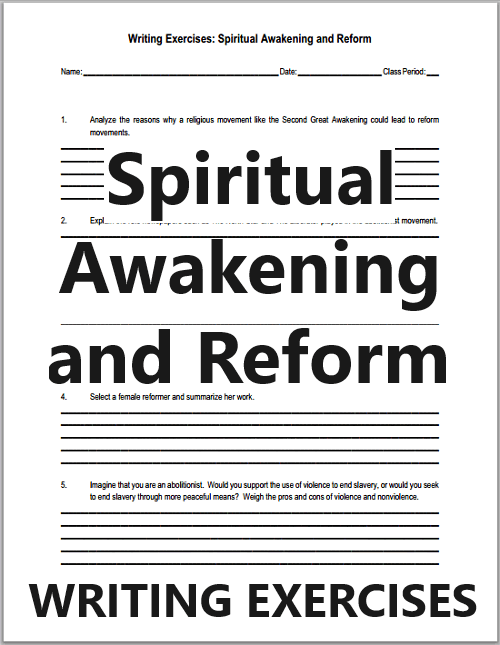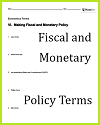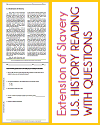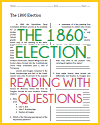| Spiritual Awakening and Reform Essay Questions |
|---|
| www.studenthandouts.com ↣ U.S. History ↣ National and Sectional Conflict ↣ Worksheets |
 |
    |
|
Click here to print. Answers will vary. 1. Analyze the reasons why a religious movement like the Second Great Awakening could lead to reform movements. The Second Great Awakening emphasized individual responsibility and the belief that salvation could be earned through good works. This created a moral imperative to perfect society, motivating believers to attack social ills like slavery, drunkenness, and inequality as a religious duty, fueling widespread reform. 2. Explain the role newspapers such as The North Star and The Liberator played in the abolitionist movement. Newspapers like The Liberator and The North Star were vital to abolitionism. They spread anti-slavery arguments, exposed the horrors of slavery, and built a national community of activists. By shaping public opinion and keeping the issue prominent, they made the moral case for immediate emancipation. 3. Describe Nat Turner's rebellion and the reaction to it. Nat Turner's 1831 rebellion was a violent slave uprising in Virginia where Turner and his followers killed about 60 white people. The reaction was brutal: many innocent black people were murdered in retribution, and Southern states enacted harsher slave codes, severely restricting enslaved and free black people's rights. 4. Select a female reformer and summarize her work. Susan B. Anthony was a pivotal leader who dedicated over 50 years to the cause of women's suffrage. She campaigned tirelessly for women's suffrage and property rights, co-founded the National Woman Suffrage Association, and mobilized support through relentless speaking tours and petitions, laying the critical groundwork for the 19th Amendment. 5. Imagine that you are an abolitionist. Would you support the use of violence to end slavery, or would you seek to end slavery through more peaceful means? Weigh the pros and cons of violence and nonviolence. As an abolitionist, my conscience would compel me towards nonviolence, advocating for moral suasion and political pressure. However, the profound injustice of slavery makes the argument for violence understandable as a last resort (e.g. John Brown). While nonviolence preserves moral high ground, the failure of peaceful means could make forceful resistance seem necessary to end an intolerable evil, despite the immense risks. |
|
Nat Turner's Rebellion, also known as the Southampton Insurrection, was a significant slave rebellion that took place in Southampton County, Virginia, in August 1831. It was led by Nat Turner, an enslaved African American who believed he was chosen by God to lead his fellow enslaved people to freedom. The Rebellion
|
| www.studenthandouts.com ↣ U.S. History ↣ National and Sectional Conflict ↣ Worksheets |








